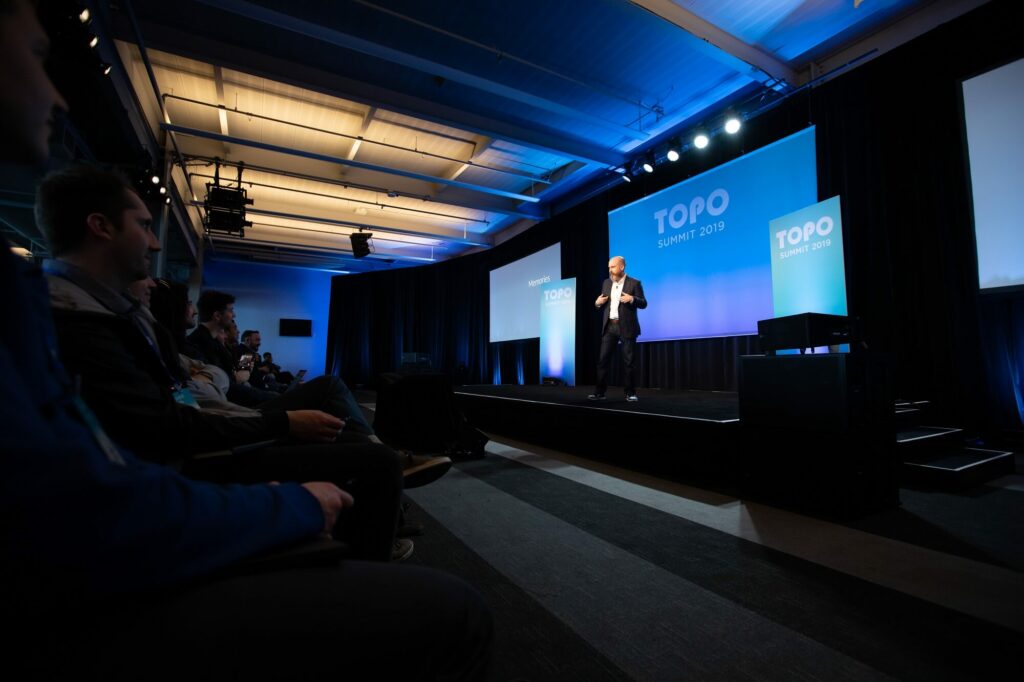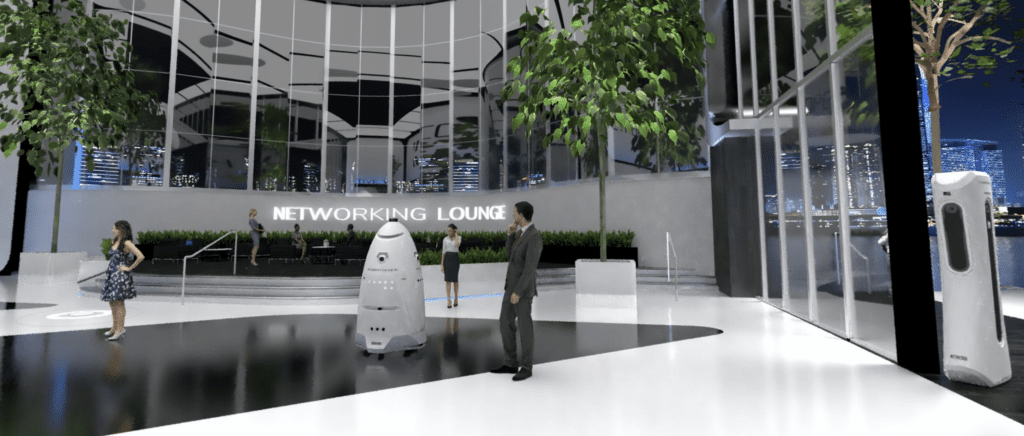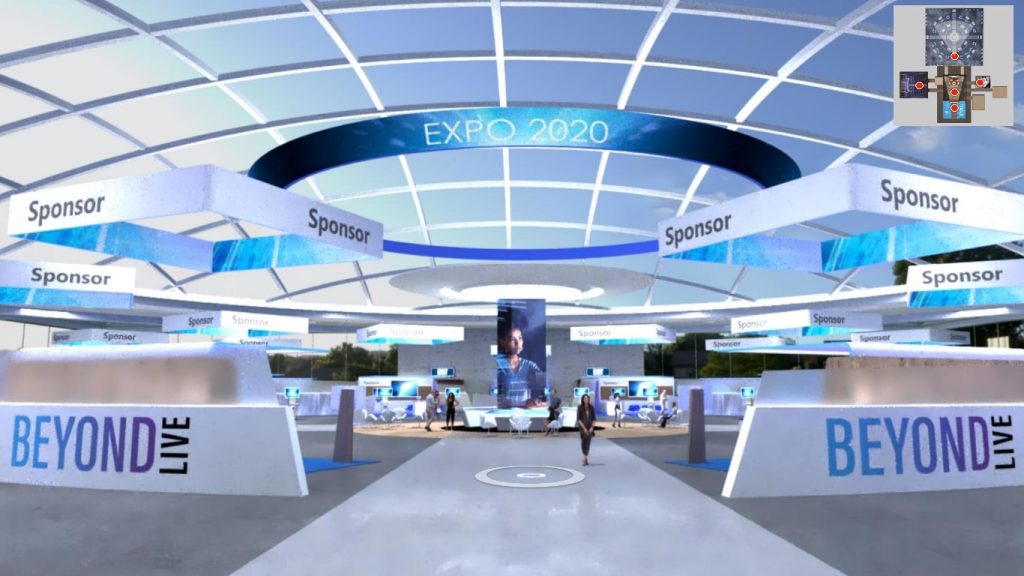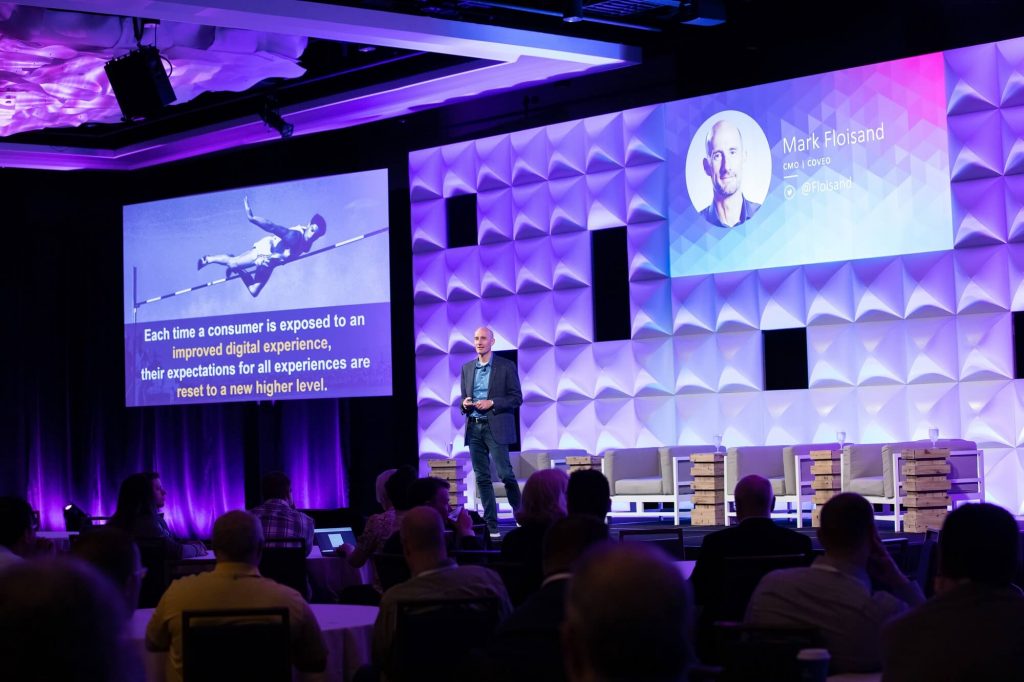Planning a hybrid trade show might seem like a complex task, and it’s true that it can be a little more complicated to simultaneously pull off live and virtual trade show components to the satisfaction of both your live and online audiences. The good news is, if you’ve been involved in planning a live trade show, you’re already well-acquainted with at least half the job. To plan a hybrid trade show, you’ll just expand your focus to include the virtual aspects of the event.
1. Start with Vision
For any event, it’s important to begin by defining what your vision for that event is. For hybrid events it’s particularly important because you must decide “how hybrid” the event will be. Some events are only a little hybrid, meaning only some of the live event content is available online.
For a hybrid trade show, exhibiting companies must have the option to present virtual booths as well as (or instead of) physical ones. And any other content available at the live venue—such as a keynote address or education tracks—should be available online too.
To develop your vision for the event, consider a few basic concepts:
- Who is your event audience? Consider demographic info such as location, job title and description, industry, and company size.
- What is the purpose of the event?
- What value will the audience derive from the event?
- In addition to exhibitor booths, what event content do you envision?
- What content will be available live, online, or both?
- How will online attendees participate in the event?
- Where will event promotion take place?
- What data will you collect, and how?
- What are your KPIs? What metrics will you track to evaluate the event and assess ROI?
2. Set Your Timeline
The next step for hosting a hybrid event is to set your event planning timeline. This checklist details every phase, stage, and step involved in planning the event. Your timeline might range from one to two months for a small show, up to a full year for a large event.
If it’s your first time hosting a hybrid event, make sure to build in plenty of buffer time, to account for the learning curve.
Your Ultimate Event Planning Timeline
3. Break Down Your Budget
Hybrid events may entail a significant amount of extra work in planning and preparation, but they do so in a very economical fashion. Because of this, splitting your event budget right down the middle, with half for the live portion and half for the virtual, isn’t necessarily a good use of funds. While a hybrid trade show does need a bigger budget, moving from live-only to a hybrid model won’t double your event expenses.
In addition to the usual trade show expenses, such as venue and vendors, there are also virtual expenses, like:
- Virtual events platform. A website or platform where people who attend virtually can access content.
- Recording and broadcasting equipment. To make content available online, you need extra tech equipment for recording and broadcasting:
- HD camera, with appropriate accessories, such as a tripod or shoulder rig for stability
- Additional audio equipment for capturing, recording, and broadcasting sound
- Additional lighting
- An encoder for livestreaming
- High-speed, stable internet at the venue, if you’re broadcasting live
- Additional personnel. You may need a larger team to account for the extra work involved in producing content for the online audience, especially if you’re planning live broadcasts.
- Virtual swag. Digital goodies in addition to swag for the live venue

4. Pick a Venue/Hybrid Event Platform
Once you’ve roughed out a timeline and budget, your next major step is typically to choose a venue for your trade show.
Live Venue
In general, you can select a live venue as normal, but there’s one factor of a hybrid event that may affect your venue choice: A presentation being recorded for a hybrid event needs more space than a presentation at a solely physical event. Whether it’s a keynote address, a panel discussion, or an education session, more space is needed for equipment and production personnel if that content is being recorded or broadcast live. Factor that in when considering room and space requirements, and venue choice.
If you’re planning an annual event and have been using the same venue for several years, it’s worth considering whether your space needs will change significantly and whether the same venue is adequate for a hybrid event.
How to Choose a Hybrid Venue
Virtual/Hybrid Event Platform
At this stage you can also start looking at hybrid event platforms. There’s a lot to consider here, as your platform choices are extensive. The simplest option functions like a website, with content menus, chat functions, and other features. There are also three-dimensional virtual venues that attendees can explore as if they were actually there. In these 3D digital venues, attendees can visit virtual trade show booths in much the same way they’d visit physical booths at a live venue.
When sifting through your options, you’ll need to have a good idea of what kind of content you’re planning for the event. This is important for picking a platform that supports the kind of content you want to produce for your online audience.
Your choice of virtual environment is also important when it comes to integrating the live and virtual parts of the hybrid event. If your goal is a true hybrid trade show, where online and live attendees can have an equally valuable experience, you’ll need a robust platform that can support a wide range of content types. You’ll also need platform features that focus on boosting engagement and allow for different types of attendee communication and networking.
Explore a 3D Interactive Virtual Platform
5. Plan the Event Agenda
Many trade shows have an agenda of educational or informational content in addition to the exhibit hall. If your hybrid trade show will have an agenda of content, decide how much of that content will be broadcast to the online audience. Ideally, any content that’s available at the live venue should also be available online, either as scheduled content or on-demand.
Keep Your Online Audience in Mind
It’s important to be aware that people consume and absorb content differently online than they do in person. Your online audience has a shorter attention span, and it’s harder to keep them engaged. They may even be multi-tasking when they watch event content.
To best appeal to your online audience, content segments should be fairly short, with a break every 30 to 45 minutes. The content should also offer some interaction, such as a Q&A or informal polls, to help boost engagement.
This doesn’t mean you have to produce two different versions of each session. Your live audience will probably appreciate shorter sessions with regular breaks too. But it does add an extra layer of complexity to content production, along with the need for extra equipment and personnel.
Choosing Speakers
Every event needs good content to pull in high attendance numbers, but for a hybrid event you have to be particularly choosy when it comes to selecting speakers.
For keynotes, panel discussions, and any other content you have planned, it’s not enough to just find the big industry celebrities anymore. When your speakers need to present to an online audience at the same time as a live one, having specific experience with online audiences is a huge benefit.
6. Lock in Sponsors and Exhibitors
The hybrid events industry is still relatively new. As a result, many potential sponsors and exhibitors may be unfamiliar with how these events work and how their companies can benefit. It’s worth the effort to put together sponsorship and exhibitor packages that highlight the unique benefits of virtual booths, and hybrid events in general; for instance:
- For sponsors, there are plenty of advertising opportunities online, from webpage banner ads to sponsored spots on video content. Learn more about getting virtual sponsors here.
- Access to high-quality demographic data from virtual attendees
- Affordability for exhibitors. Small companies or startups that can’t afford to attend a live trade show may find a virtual booth is well within their budgets.
- Affordability for attendees. Online events are more affordable and accessible. People who can’t attend a live trade show may purchase online tickets when they have the opportunity. This means sponsors and exhibitors have the chance to reach new audience segments.
7. Promote Your Hybrid Trade Show
As you start developing a content plan, selling booth space, and attracting sponsors, you can also get started on promotion. Highlighting the hybrid nature of the event is important here, especially if the trade show had previously been live-only. Options for event promotion include:
- Event website, preferably with integrated registration and ticketing
- Email campaign targeted to convert existing subscribers into event attendees
- Social media promotion, with an event hashtag and regular updates as the event takes shape
- Additional promotion via exhibitors, sponsors, and speakers
8. Execute a Technical Rehearsal/Run-Through
Pre-event rehearsals are essential to ensure your hybrid content works as it’s designed to. Make a point of checking all recording and broadcasting equipment at the same time as you complete your final venue walkthrough.
It’s also useful to complete a schedule rehearsal, if you have a content schedule planned. Rehearsals are especially important if you’re broadcasting live content to your online audience, as you’ll need to ensure sound and video are both broadcasting correctly to the right online location.
The Hybrid Model Adds Value to a Live Event
Making the shift from a live-only to a hybrid trade show model definitely adds more work to your load. But the potential value that the hybrid model adds is much greater. Shifting from live to hybrid gives you the chance to expand your audience, gain new exhibitors and sponsors, and create a trade show that’s more valuable for everyone—you included.










